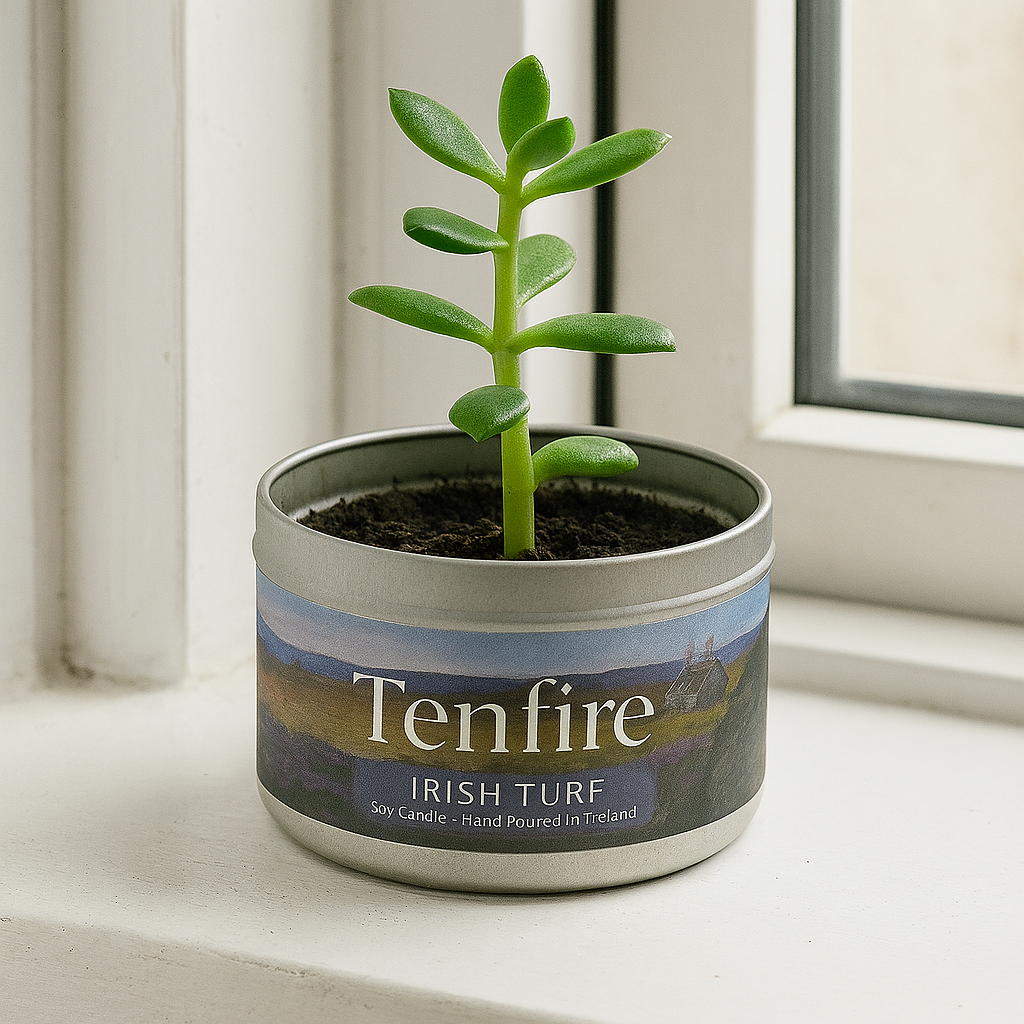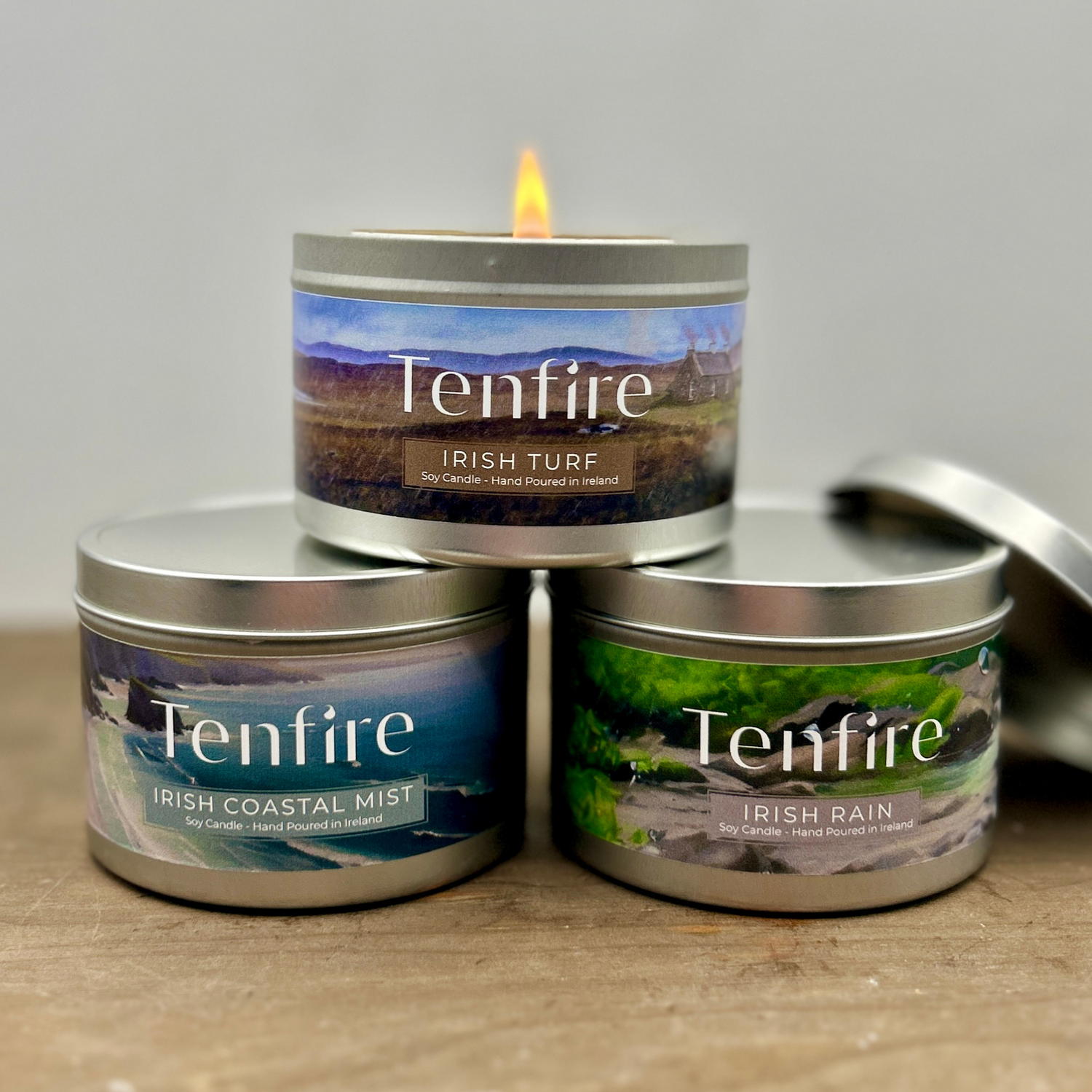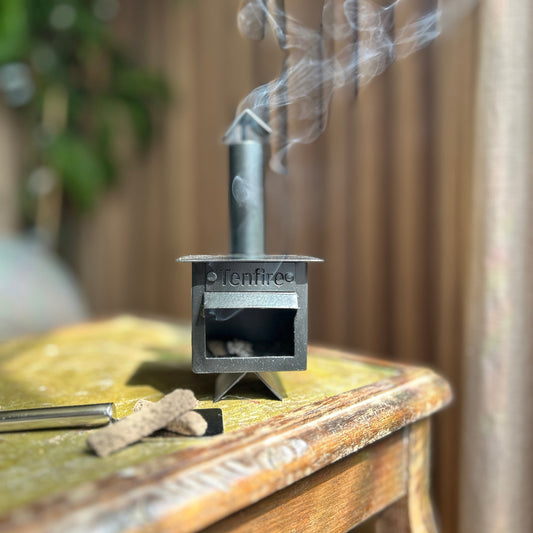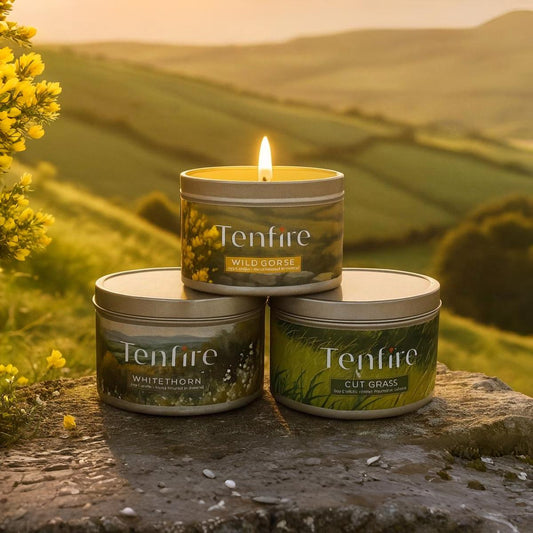
When Is A Candle Done?
We love our candles for the warmth, the scent, the glow—but eventually, they all come to an end. The question is: when is a candle actually done? As the founder of Tenfire, I’ve been asked this more times than I can count. And honestly? It’s one of the most important things to get right—for safety, for sustainability, and for respect for the object itself.
In this article, I’ll show you how to know when it’s time to say goodbye to your candle, and what to do after the last burn. Whether it’s a Tenfire tin or another candle you love, this is your guide to a graceful (and safe) ending.
TL;DR – When Is a Candle Done?
-
Stop burning when 1/4 inch of wax is left
-
Burning beyond that can overheat the tin or glass
-
Reuse or recycle the container
-
Never burn to the metal base or exposed wick tab
Table of Contents
Why It’s Important to Know When a Candle Is Done
Letting a candle burn down too far can lead to all kinds of problems:
-
Overheated containers
-
Cracked or scorched surfaces
-
Exposed wick tabs that damage the bottom
Knowing when a candle is done isn’t just about getting the most out of it—it’s about knowing when to stop.
The Safe Burn Limit: 1/4 Inch Rule
The industry standard—and what we use at Tenfire—is simple:
Stop burning your candle when 1/4 inch (about 6mm) of wax remains.
Why?
-
That last bit of wax acts as a buffer
-
It keeps the container from direct heat exposure
-
It reduces the risk of overheating or breakage
This is true for tins, glass jars, or ceramic vessels.
What Happens If You Burn Too Low
Burning a candle past the 1/4 inch point can cause:
-
Metal heat conduction: especially in tins, heat concentrates fast
-
Overheating or scorched surfaces under the candle
-
Cracking (for glass jars) due to high localized heat
-
Damaged countertops or furniture
And the worst part? That last little bit of wax doesn’t burn well anyway—it’s often full of wick debris and uneven melt.
It’s tempting to keep going, but the risk isn’t worth it. You’re better off enjoying your candle safely to the very end—and saving the container for what comes next.
How to Spot the Last Burn
You’ll know your candle is nearly done when:
-
The melt pool doesn't fully cover the top anymore
-
You can see the wick base starting to peek through
-
The flame gets small or flickers
-
The scent throw is weaker
These are all signs that your candle is close to its natural endpoint.
When you reach that last session, keep it short. Maybe 30 minutes to an hour max—just enough to enjoy it one more time.
Candle Tin Safety: Why the Base Matters
With Tenfire candles, we use travel-friendly tins that are beautiful, durable, and recyclable. But like all metal containers, they can get very hot near the end of the wax.
The base contains the wick tab—a metal disc that holds the wick in place. If you burn past that, the flame touches metal and raises the temperature fast.
Always stop before the wick tab is fully exposed. If it’s visible, your candle’s done.
Cleaning Out the Leftover Wax

Once your candle is officially done, here’s how to clean the tin:
-
Freeze it for a few hours – wax shrinks and pops out easily
-
Use hot water – pour boiling water into the tin, let wax rise and cool
-
Wipe with paper towel and wash with dish soap
Important: Don’t pour wax down the drain—it can clog pipes.
Creative Ways to Reuse Candle Tins

Here’s where the fun begins. That little tin has more to give:
-
Use it as a mini plant pot for herbs or succulents
-
Store paperclips, hairpins, or matches
-
Fill with spices, salt, or tea in the kitchen
-
Turn it into a travel-size sewing kit
-
Make a keepsake tin for tiny mementos
-
Use it as a portable candle kit for camping or emergencies
At Tenfire, we intentionally design our tins to be reused. It’s part of our commitment to quality and sustainability.
Can You Refill a Candle Tin?
Yes—if done safely.
Some candle lovers choose to refill their tins with wax refills or DIY candle kits. If you go this route:
-
Make sure the container is clean and dry
-
Use a new wick tab secured with adhesive
-
Avoid overfilling
-
Let the wax cure fully before burning again
Refilling can be a great way to personalize your scent while keeping a beautiful tin in use.
The Emotional Side of Finishing a Candle
There’s something surprisingly emotional about reaching the end of a candle. The flame you lit during quiet mornings or late-night conversations eventually flickers out.
It held space for you. It made a room feel like home. It may even be tied to memories—holidays, milestones, or just your everyday rituals.
Finishing a candle gives you a chance to pause. A tiny, fragrant reminder that everything has a season.
What to Do with the Final Wax Bits
Don’t throw them out. Even the scraps can be useful:
-
Add them to a wax warmer to enjoy the final scent
-
Melt and mix with other leftovers to make a custom scent block
-
Use for fire starters (with cotton and cardboard)
-
Add to a cotton pad or pouch and leave in drawers for subtle fragrance
At Tenfire, we believe nothing beautiful should go to waste—not even the scraps.
Saying Goodbye: The Ritual of the Last Burn
The last burn of a candle can feel weirdly emotional. It means the end of something cozy, something familiar. That scent you loved might not come around again for a while.
But it’s also a chance to pause, take a moment, and let the candle go out on a high note.
Light it one last time. Sit with it. Let the fragrance linger. And when it’s done, know that it did its job beautifully.
Then clean the tin, repurpose it, and maybe light a new one to start something fresh.
Final Thoughts from Dawn
Candles don’t last forever—and they’re not supposed to. That’s part of what makes them special. But knowing when a candle is done helps you get every bit of joy from it without risking safety.
At Tenfire, we design our candles to burn beautifully from start to finish. And when that finish comes, we hope you reuse the tin, remember the scent, and come back for something new.
Here’s to graceful endings,
Dawn
Founder, Tenfire





